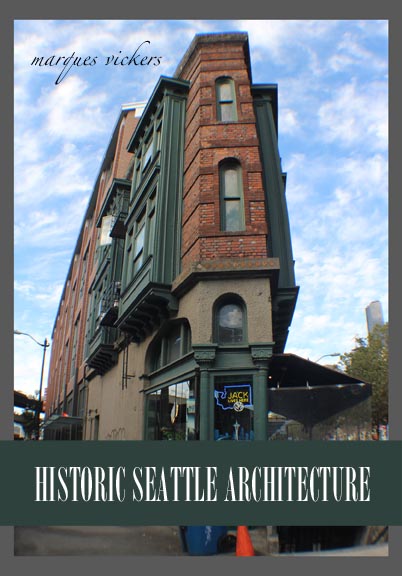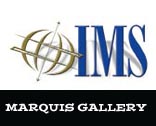
Adobe PDF File eBook Ordered From This Website Will Be Delivered Within 24-48 Hours from your confirmed order as we manually process each order. Thank you for your understanding.
“Historic Seattle Architecture” is author and photographer Marques Vickers’ illustrated edition of the city’s most prominent high-rise constructions built between 1890-1930. Over 250 photographs document over 125 historical structures establishing a visual profile and economic time capsule of Seattle’s early economic legacy.
The edition portrays some of the most influential downtown constructions including the Smith and Seattle Towers, Washington Mutual Triangle, Coliseum Theatre and the Interurban, Arctic, Dexter Horton, and Pioneer Buildings. Photographs from multiple perspectives accentuate distinctive architectural traits and detailing.
Contemporary Seattle is undergoing a dynamic resurgence of architectural construction consisting primarily of skyscrapers. Each completed monolith provides an intriguing and often imposing contrast to the modestly scaled structures from a distant era. With the passage of time, historical constructions and their unique aesthetics remain statuesque and relevant. Historical preservationist groups have fought successfully for their survival. This appreciation has enabled Seattle to assume a distinctive and prominent position as a leader in West Coast architecture.
Seattle’s integration of traditional and contemporary design reinforces its image as a desire urban living environment. Few American cities can still document the precise stages of their evolution by the remaining strata of their architecture.
Seattle is an exemplary example showcasing that capability.
Historically Seattle was deeply traumatized financially by the slowdown caused by the nationwide Panic of 1893. Misfortune was compounded by calamity with a devastating June 6th, 1889 fire that decimated 25 downtown blocks. The entire layout of wood framed structures was destroyed.
The catastrophe ironically rejuvenated the downtown, resulting in a fervent reconstruction program consisting exclusively of stone and brick structures. Wood framed buildings were prohibited. The Klondike gold rush of 1896 spurred regional economic activity, particularly in providing goods and services to the Alaskan bound miners.
During the first two decades of the 20th century, Seattle accommodated a massive incoming immigration. The influx resulted in the creation of outlying tightly concentrated neighborhoods. The downtown core swelled minus coordinated zoned planning. Steep hillsides were lowered to enable fresh constructions and greenbelt territories. Parklands, bridges and public works projects proliferated creating a diverse blend of ambiance and chaos.
In 1914, the 38-story Smith Tower was constructed and named after firearm and typewriter magnate Lyman Cornelius Smith. He would not live to see its completion. The skyscraper was Seattle’s first and among the tallest outside of New York City at the time of its completion. It remained the tallest building west of the Mississippi until 1931 and was only eclipsed within Seattle upon the construction of the iconic Space Needle in 1962.









Marquis Publishing is a publisher of paperback and electronic books.
MARQUIS PUBLISHING
California, USA
1 (707) 712-8062
marques@artsinamerica.com











